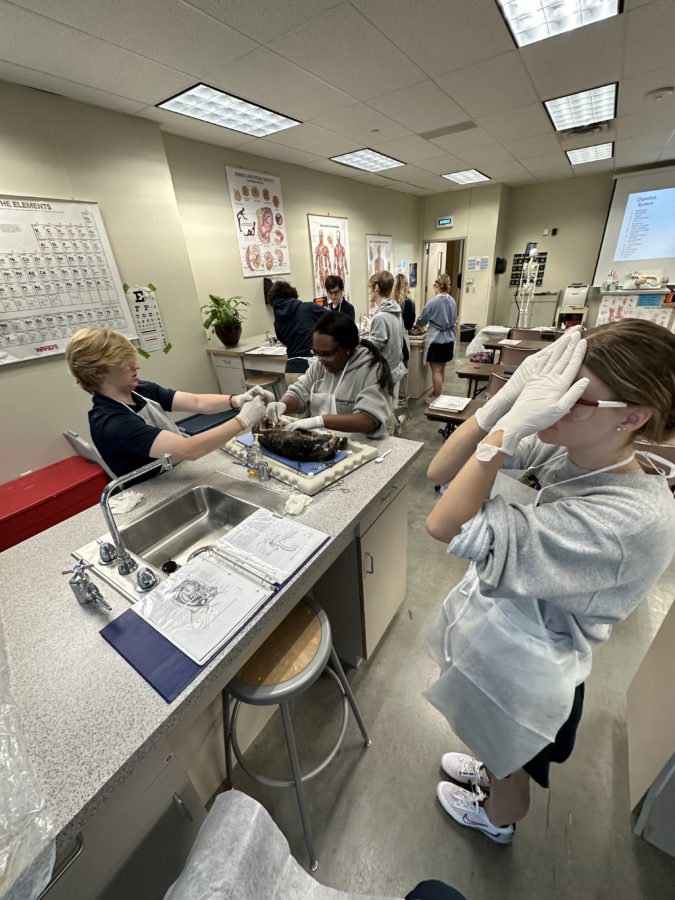I’m sure you have smelled the stench walking past the science rooms upstairs. Every spring, the smell appears again in Mrs. Lumley’s classroom . This smell tends to come from the bags of deceased cats that Mrs. Lumley keeps in her room leading up to the dissection.
This rancid smell mainly comes from formaldehyde, the liquid in the cat bags that helps preserve the cat bodies. When the bags are opened, this smell is very noxious. Each year. Mrs. Lumley’s Honors Anatomy students get a chance to learn about the anatomy of a cat.
By being hands on with the cats the students are able to see and touch what they have been learning about. It helps the students see the ins and outs of anatomy in animals.
“I’m a visual learner so being able to dissect the cat instead of just learning on a screen or paper has helped me better understand the concepts we are learning” said Senior Micah Tuthill. The cats are injected with red and blue dye to help students to see the different arteries and veins that would normally be harder to see. It helps to have the arteries and veins more visible with the dye, so students can fully immerse themselves in the anatomy of the cat.
Juniors and seniors have the opportunity to be in honors anatomy and learn the important details of cat dissections. Junior Lauren Burnett said, “Working with the cats is very fun but difficult.”
If this engaging dissection sounds appealing or interesting to you, be sure to sign up for Honors Anatomy to truly experience the anatomy of a cat.



